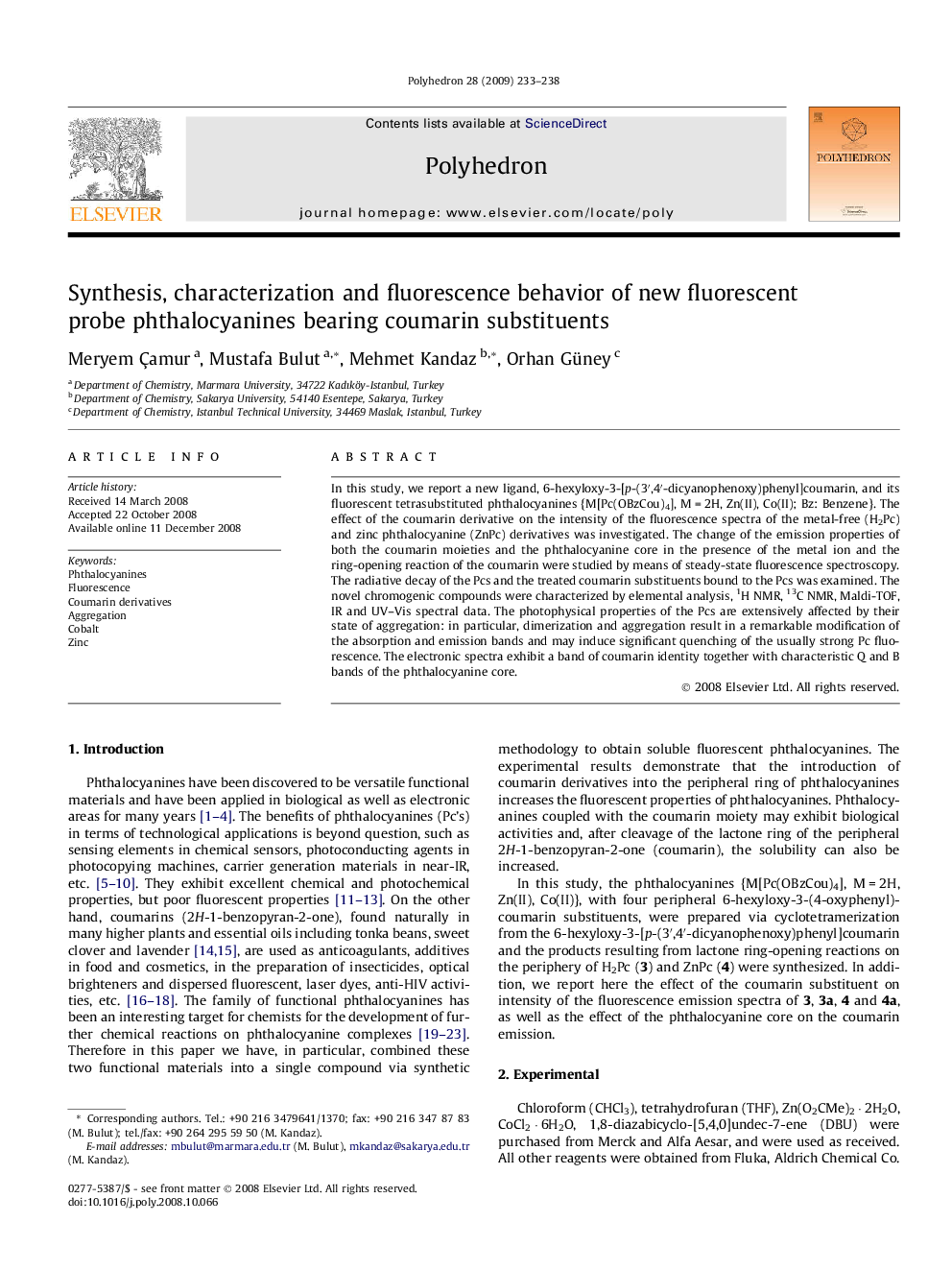| Article ID | Journal | Published Year | Pages | File Type |
|---|---|---|---|---|
| 1339031 | Polyhedron | 2009 | 6 Pages |
In this study, we report a new ligand, 6-hexyloxy-3-[p-(3′,4′-dicyanophenoxy)phenyl]coumarin, and its fluorescent tetrasubstituted phthalocyanines {M[Pc(OBzCou)4], M = 2H, Zn(II), Co(II); Bz: Benzene}. The effect of the coumarin derivative on the intensity of the fluorescence spectra of the metal-free (H2Pc) and zinc phthalocyanine (ZnPc) derivatives was investigated. The change of the emission properties of both the coumarin moieties and the phthalocyanine core in the presence of the metal ion and the ring-opening reaction of the coumarin were studied by means of steady-state fluorescence spectroscopy. The radiative decay of the Pcs and the treated coumarin substituents bound to the Pcs was examined. The novel chromogenic compounds were characterized by elemental analysis, 1H NMR, 13C NMR, Maldi-TOF, IR and UV–Vis spectral data. The photophysical properties of the Pcs are extensively affected by their state of aggregation: in particular, dimerization and aggregation result in a remarkable modification of the absorption and emission bands and may induce significant quenching of the usually strong Pc fluorescence. The electronic spectra exhibit a band of coumarin identity together with characteristic Q and B bands of the phthalocyanine core.
Graphical abstractIn this study, we report a new ligand, 6-hexyloxy-3-[p-(3′,4′-dicyanophenoxy)phenyl]coumarin, and its fluorescent tetrasubstituted phthalocyanines {M[Pc(OBzCou)4], M = 2H, Zn(II), Co(II); Bz:Benzene}. The effect of the coumarin derivative on the intensity of the fluorescence spectra of the metal-free and zinc phthalocyanine (ZnPc) derivatives was investigated. The change of the emission properties of both the coumarin moieties and phthalocyanine core in the presence of the metal ion and the ring-opening reaction of the coumarin were studied by means of steady-state fluorescence spectroscopy. The novel chromogenic compounds were characterized by elemental analysis, 1H NMR, 13C NMR, Maldi-TOF, IR and UV–Vis spectral data.Figure optionsDownload full-size imageDownload as PowerPoint slide
